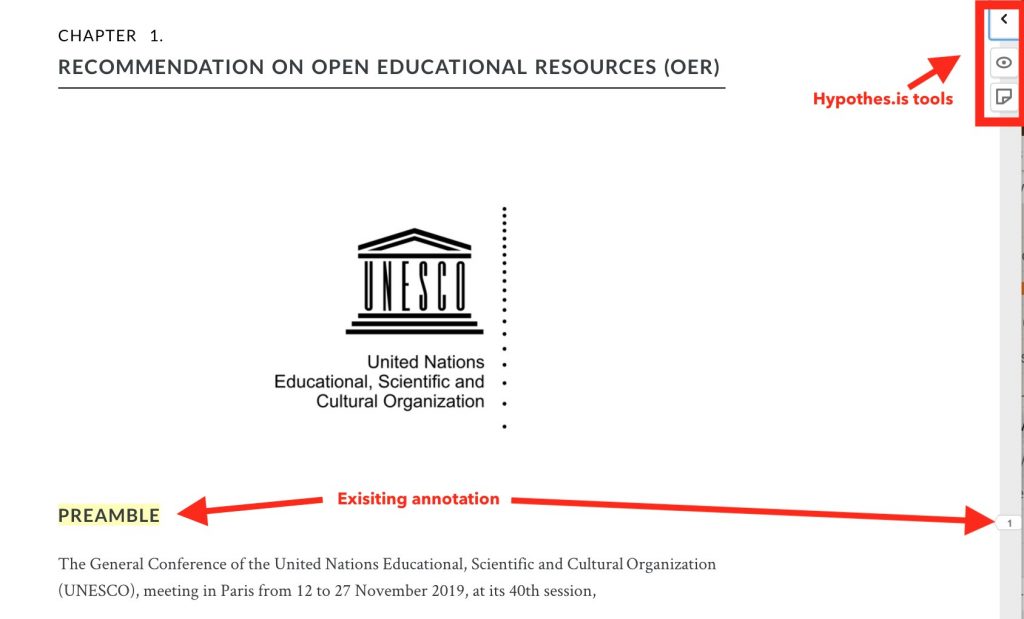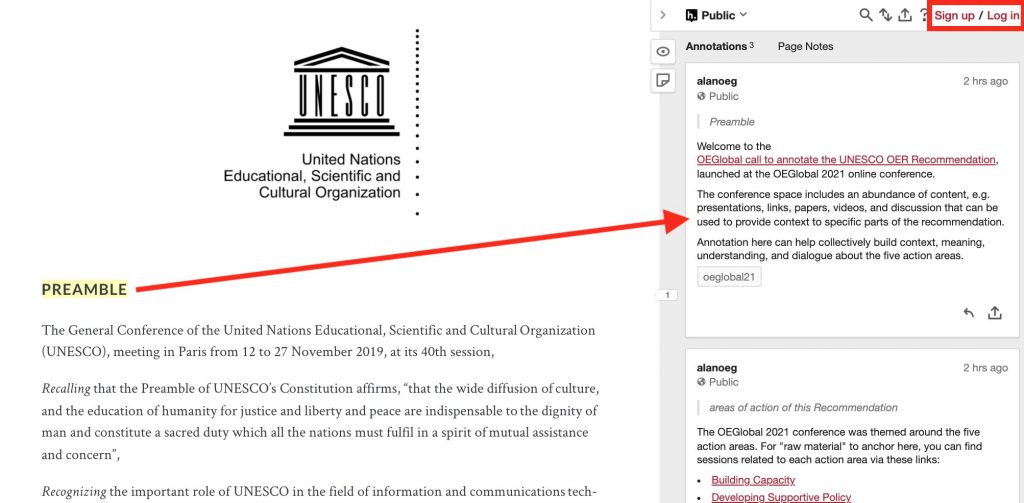2 Annotating With Hypothesis
The previous chapter introduced you to Hypothesis and provided a place to practice the act of annotation. If you are ready, you can start annotating the Recommendation on OER in the language version of your choice. Or read on to see how in more detail how annotation works in this book.
The Annotation Process
We have created a short video demonstration of the annotation process or read below for a visual guide.
As a reminder annotation is enabled if you see in the top right corner a gray button with a < symbol. Any text highlighted in yellow as well as the numbers in the right side scrollbar indicate the presence of existing annotations by other people

Upon opening the tools via the < button you see the annotation tools and read notes previously added. If you are not logged in to Hypothes.is, you can do it here and even create a new account.

We added an annotation to the first heading as more of a welcome. You can write replies to existing annotations. And as an example of a value of Hypothesis that every annotation you make is available as a unique web address. Open this note in context of the source document,
https://hyp.is/Zn–CCFxEeyQfs_9eFdx0A/oer.pressbooks.pub/oeg2021/chapter/english/
How does one annotate? Just select a phrase or word that you would like to add a commentary, question, a reference, a link to something seen here at the conference. Hypothesis offers right there a choice to add a note as annotation or to simply highlight for your own reference.

Choosing Annotate opens a small composition window in the Hypothesis sidebar. You can add text, create hyperlinks, and insert images or media.

As an example see the annotation added here that references a presentation at the OEGlobal 2021 conference.
We ask that you add tags for annotations done during OEGlobal 2021 using oeglobal21 (and any others that you think will help connect ideas). Tagging this way creates a dynamic link to all annotations done in response to the OEGlobal 2021 conference.
Also you should see that all public annotations are automatically licensed under Creative Commons CC0 (learn more…). Note as well that as you actively annotate you build up a collection of all your notes across all sources (example) – this is a powerful tool for any researcher.
The OEGlobal 2021 conference space has accumulated a huge amount of public knowledge, examples that can help provide insight and meaning to the Recommendation on OER– now we ask you as conference attendees (and the open education community) to light up this version of it with annotations.
To learn more about Hypothesis, start with https://web.hypothes.is/ and see more specific information, ideas, and examples under Hypothesis for Education.
We hope now you are ready to start adding notes to the OER Recommendation. If you are interested, read the next section to learn how this activity supports the aim of the OE Global 2021 and 22 Conferences and as well, locate items from the online conference that can be added as annotations.
